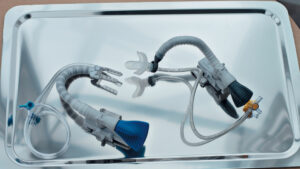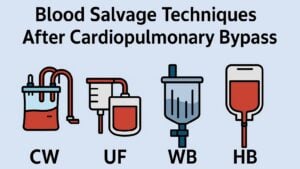Background and objectives: The relationship between cerebral perfusion and new postoperative ischemic stroke in obese patients is not well defined. The aim of this study was to investigate the association between selective bilateral anterograde cerebral perfusion and new postoperative ischemic stroke in obese patients with emergency surgery for acute type A aortic dissection.
Materials and methods: A total of 292 patients with emergency surgery for acute type A aortic dissection were included in this study. Patients with hemorrhagic stroke or ischemic stroke with severe neurological dysfunction at admission that were not candidates for surgery; patients who died in the first 48 h after intensive care admission and patients with incomplete medical records were excluded.
Results: The mean age was 59.42 ± 10.68 years and the mean Euroscore was 9.12 ± 1.63. Obesity was present in 76.4%, the incidence of new postoperative ischemic stroke was 27.5%, and the postoperative mortality rate was 26.7%. The mean cardiopulmonary bypass time was 206.81 ± 75.48 min, the aortic cross-clamp time was 118.2 ± 46.42 min, and 90% of cases required cerebral perfusion. The mean cerebral perfusion time was 30.8 ± 24.41 min. Obese patients had a higher frequency of in-hospital death (p = 0.009), smoking (p = 0.036), hypertension (p = 0.023), left common carotid artery dissection (p < 0.001), right common carotid artery dissection (p = 0.029), femoral artery cannulation (p = 0.026), aortic root replacement (p = 0.009), aortic valve replacement (p = 0.005) and early reintervention for bleeding (p = 0.004). Using logistic regression, selective bilateral anterograde cerebral perfusion over 40 min in obese patients was independently associated with new postoperative ischemic stroke (OR = 2.35; 95%CI = 1.36-4.86; p = 0.021).
Conclusions: A patient-tailored strategy for cerebral perfusion should be considered in obese patients, considering the high atheromatous burden of the supra-aortic vessels in these patients and the potential risk of atheromatous embolization associated with this technique.
Keywords: cerebral perfusion; dissection; ischemic stroke; obesity; thoracic aorta.







